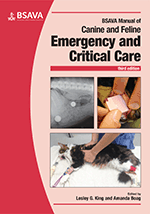
Full text loading...

Critically ill patients routinely require either anaesthesia or sedation in order to facilitate diagnosis or treatment. This chapter reviews the approach to anaesthesia, sedation and analgesia of critically ill patients; with detailed information on indications and contraindications for many commonly used drugs.
Anaesthesia, sedation and analgesia of the critical patient, Page 1 of 1
< Previous page | Next page > /docserver/preview/fulltext/10.22233/9781910443262/9781910443262.21-1.gif

Full text loading...









